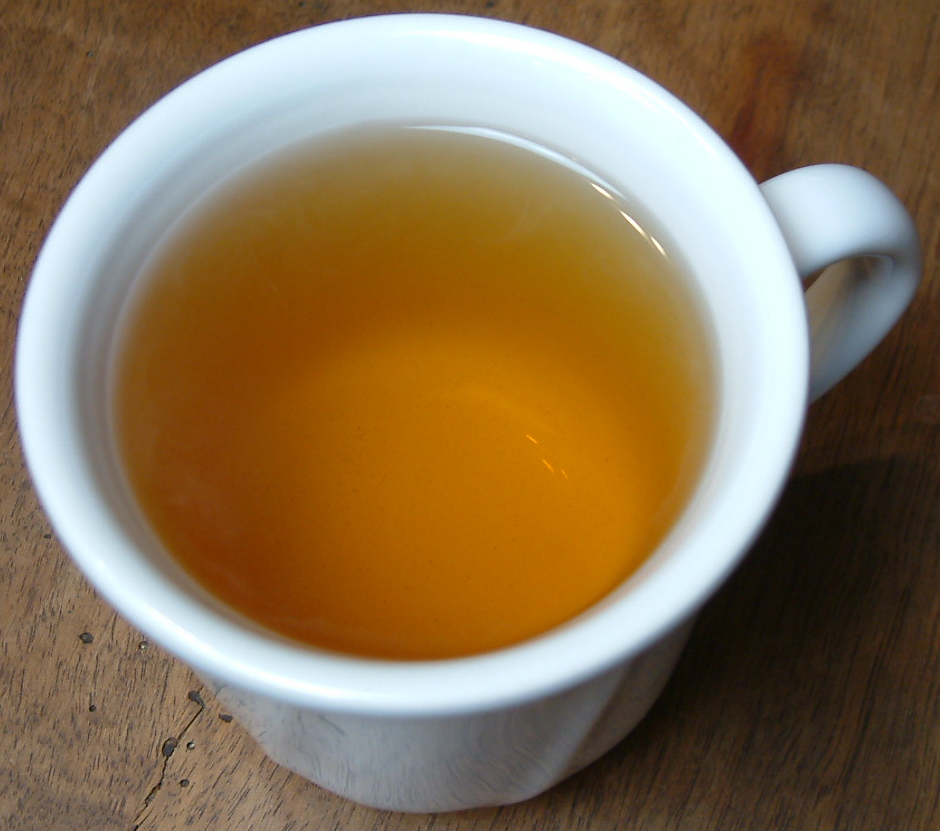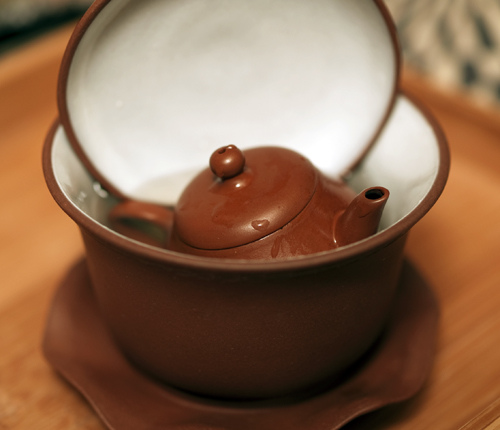Longjing, or Dragonwell Tea, is China’s most famous green tea. This tea is so prized in China that a pre-market release sale of Dragonwell in May of 2012, resulted in 500 grams of the tea selling for 180,000 Yuan or $28,499. On a per gram basis, it was purchased at a rate higher than gold was trading that day. On a per cup basis that is $171 per 8 oz of liquor, which is on equivalent to some of the more famous wines. Tea purchased at this rate usually remains in China and exchanged between business men and politicians as gifts.
The name, Dragonwell, comes from Chinese mythology where a village in China was suffering from a severe drought and was advised to pray to the benevolent dragon who lived in the nearby well to bring rain. The rain came and the village in appreciation renamed itself and its tea to Dragonwell. Authentic Dragonwell is produced in Zhejiang providence outside of the fifth largest Chinese city of Hangzhou. The area is also referred to as Xi Hu or the West Lake region and is home to several UNESCO sites, as well as tea plantations. Due to the popularity of Dragonwell, the Chinese government expanded the region they claim as home to authentic Dragonwell to all of Zhejiang province. Originally it was only produced in a 65 square mile area of Xi Hu, made up of four regions – Lion Mountain (Shifeng), the center of the original Dragonwell tea growing area, Mei Jia Wu (Mei family valley), Long Jing and Lin Yin Temple areas. Given the popularity and relatively high price at sale, there are many counterfeit Dragonwell teas on the market, so knowing how the characteristics of the authentic tea is important.
Authentic Dragonwell is harvested by hand and then pan fried to stop the oxidation process. High quality Dragonwell will be have uniform tight, flat lime to dark green dried leaves. The steeped leaves will appear plump with a uniform light green color. Lower quality Dragonwell leaves will turn bluish green to dark green in color after steeping. The tea liquor should be a bright clear jade yellow. This tea is best when brewed between 167-176 degrees Fahrenheit. The North American Tea Championship definition describes the liquor of Dragonwell tea as having a gentle smell of fruitiness with mellow plant notes. In the mouth, the liquor should have a light-bodied, buttery and smooth feel with slight astringency and hints of peas and sweet-corn with husk and a nutty finish.
I will admit the description above makes me roll my eyes and think how pretentious this sounds. However, if you are lucky enough to get your hands on an authentic Dragonwell, the description barely does it justice. It is a truly complex tea with a fabulous flavor worth slowing down to enjoy over multiple steepings.
There are many different types of Dragonwell on the market. Here is a quick list that does not cover all of them, but some of either the more common or special Dragonwell varieties.
| Xihu Longjing | This just refers to the region where the tea is grown. This is the traditional region for Dragonwell. |
| Bird’s Tongue Longjing | First growth picked on about March 21 yields a more intense aroma and taste of sweetness than the better known Ming Qian Longjing. Supply is highly dependent on the weather conditions and varies wildly year to year. |
| Bai Longjing | Not a true Longjing but looks like one and is commonly sold as one, it is actually a Bai Pian. It comes from Anji in the Zhejiang Province. |
| Shi Feng Longjing | A type of Xihu Longjing. Fresh tasting, its fragrance is sharp and long lasting. Its leaves are yellowish green in color, and easily imitated with excessive Pan frying of other green teas. |
| Pre-Qingming Longjing | The premium early season first-picking known as Ming Qian or Pre-Qingming. This tea is harvested before the QingMing Festival, which occurs around the 5th of April each year. The production cycle is very short, usually only ten days before Qingming every year. |
| Yuqian Longjing | This tea is picked after QingMing but before the summer rainy season. Its name translates to Dragonwell before the rain. |
| Qiantang Longjing | This tea still comes from the Zhejiang province but outside of the Xi Hu district. |
Even if you think you are not a green tea fan, Dragonwell tea is worth trying. What is your favorite Dragonwell memory?












